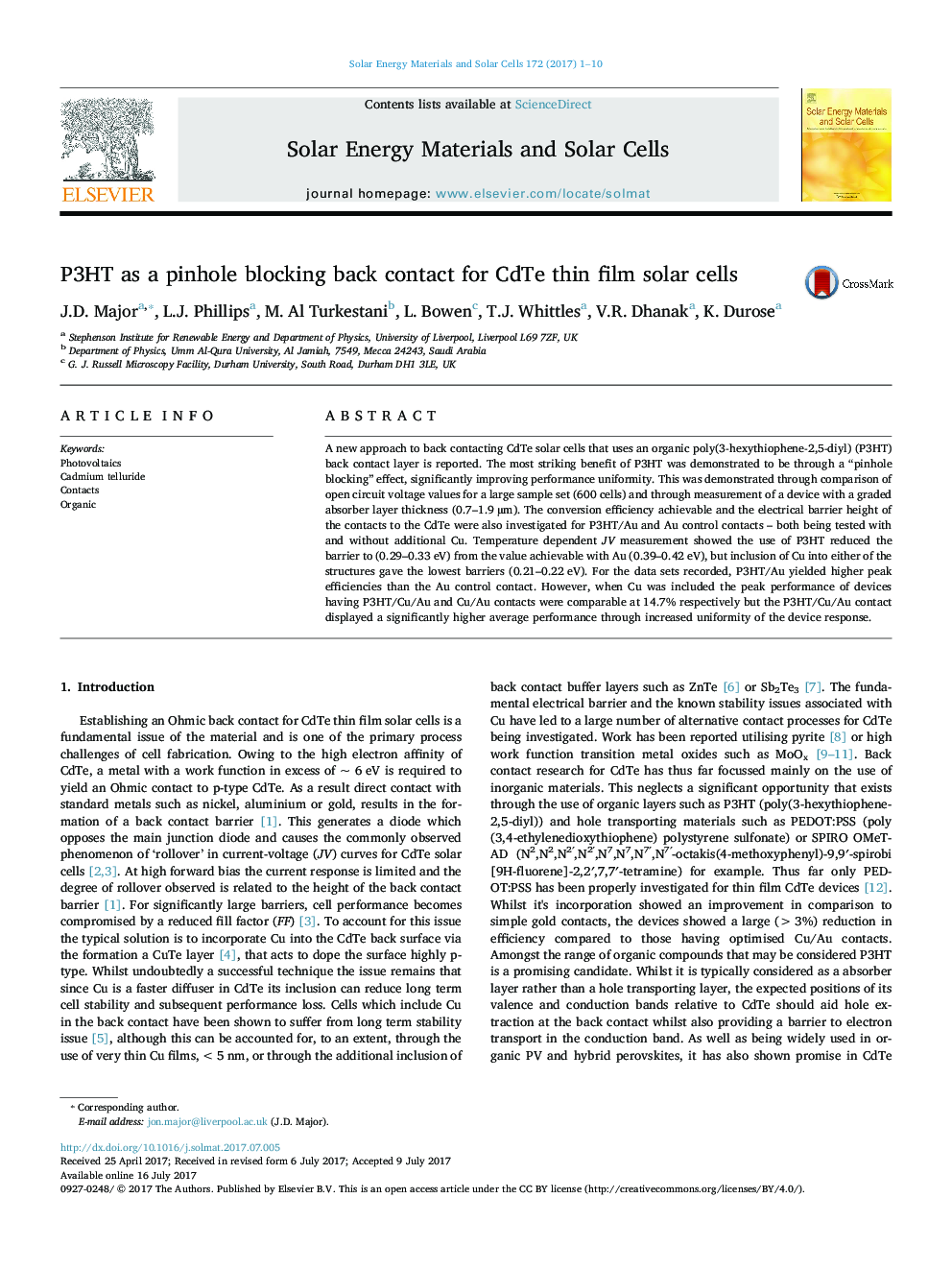| Article ID | Journal | Published Year | Pages | File Type |
|---|---|---|---|---|
| 6456862 | Solar Energy Materials and Solar Cells | 2017 | 10 Pages |
A new approach to back contacting CdTe solar cells that uses an organic poly(3-hexythiophene-2,5-diyl) (P3HT) back contact layer is reported. The most striking benefit of P3HT was demonstrated to be through a “pinhole blocking” effect, significantly improving performance uniformity. This was demonstrated through comparison of open circuit voltage values for a large sample set (600 cells) and through measurement of a device with a graded absorber layer thickness (0.7-1.9 µm). The conversion efficiency achievable and the electrical barrier height of the contacts to the CdTe were also investigated for P3HT/Au and Au control contacts - both being tested with and without additional Cu. Temperature dependent JV measurement showed the use of P3HT reduced the barrier to (0.29-0.33 eV) from the value achievable with Au (0.39-0.42 eV), but inclusion of Cu into either of the structures gave the lowest barriers (0.21-0.22 eV). For the data sets recorded, P3HT/Au yielded higher peak efficiencies than the Au control contact. However, when Cu was included the peak performance of devices having P3HT/Cu/Au and Cu/Au contacts were comparable at 14.7% respectively but the P3HT/Cu/Au contact displayed a significantly higher average performance through increased uniformity of the device response.
Graphical abstractDownload high-res image (287KB)Download full-size image
